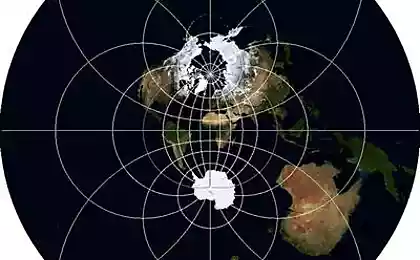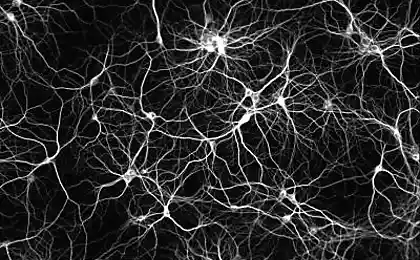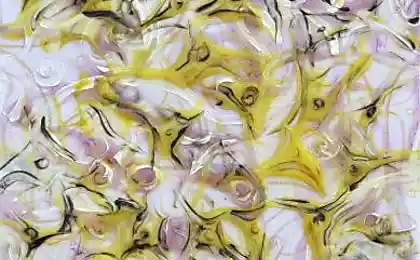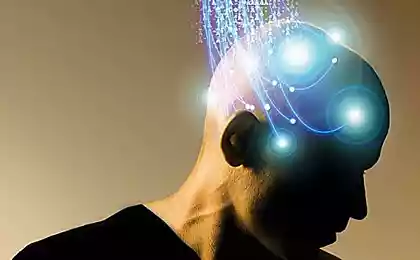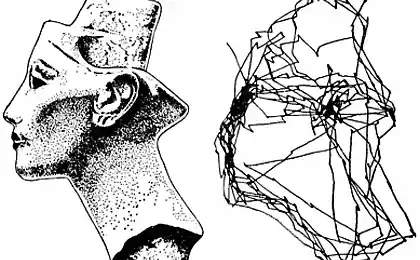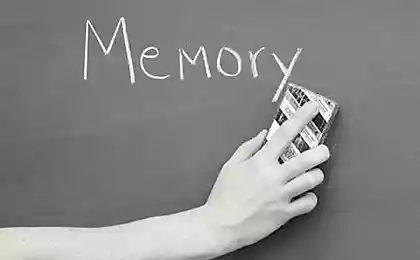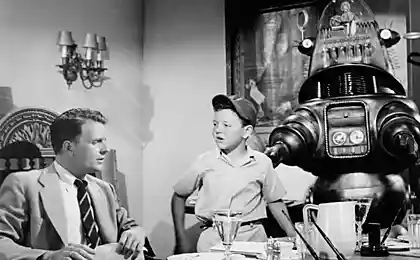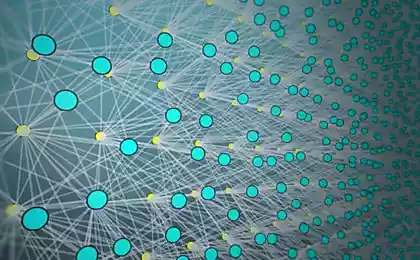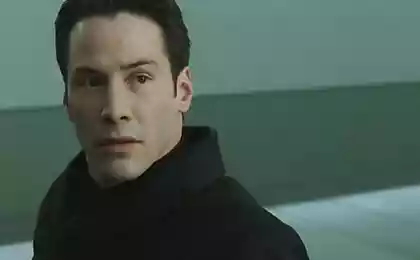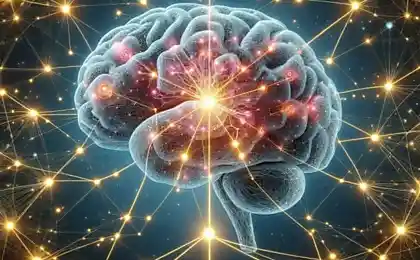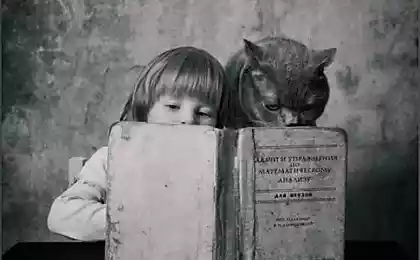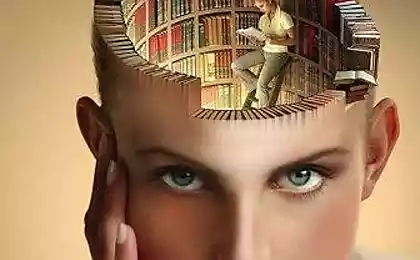2399
Logic thinking. Part 6. The projection system

For those who just joined, I advise you to start with the first part of the or at least used to describe us volnovoy crust model . The essence of the wave pattern that the information is encoded in two ways simultaneously. The first way - is evoked activity patterns corresponding to the detected neurons detectors phenomena. Second - wave identifier propagated from patterns evoked activity and bearing unique patterns. Unique pattern of each of the waves allows remote from the signal source to learn about its activity. With this approach, well explained formulated McCulloch and Pitts discrepancy between the amount of cortical areas and the number of fibers in the bundle, projecting the information from them to other areas.
From our argument implies that the brain characterized by two types of projections. The first type of the most intuitive - the so-called topographic map. For example, the visual signal from the eye along the optic nerve extends to the optic chiasm. There fibers are redistributed so that one hemisphere receives fibers only from the left, and the other only on the right half of the retina. Further along the optic tract information arrives in the lateral geniculate body, and from there to the visual cortex. The optic nerve contains about one million fibers, which corresponds to a resolution that is available to the eye. On the primary visual cortex, this information is projected through the optic radiation. Optic radiation - a uniform distribution of the nerve fibers of the beam over the entire area of the primary visual cortex (figure below). Topografichnost this mapping is that the signals on adjacent retina are adjacent to and in its projection onto the bark. With such a transfer is retained position signals. Image from every place of the retina gets in your region of the cortex that allows you to save the information on the relative positions of objects.

The visual pathway (Hubel, 1988) i>
Similarly, the conservation of topographic ordering, projected signals and sensory areas. Hence the famous Penfield map showing the representation of the different parts of the body to the sensory and motor cortex (see Figure below).

Man Penfield i>
Traditional hierarchical multilayered neural networks, for lack of a better, copied topographic projection principle declared by reducing the size of the layers and the increase in the initial receptive fields of the neurons as they move information upstairs.
However, the real system ties in the white matter of the brain is fundamentally different. Between areas of the cortex are no "thick" connecting neural loops capable of global transmission pattern of activity from one area to another. The entire projection system consists of a relatively thin beams. And contacts of these beams with zones of the cortex is not fan out and do not form radiation and have a dense "point" connection. This is particularly well illustrated by the real images of the white matter, where separately traced each projection direction (see Figure below).
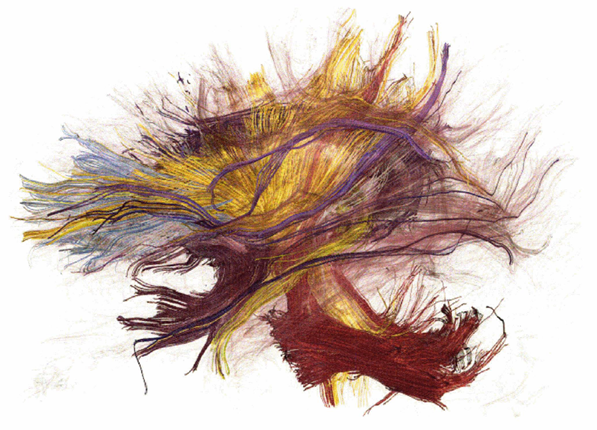
The structure of the white matter of the brain (Fallon) i>
You can quite confidently say that the connection between the areas of the cortex is not performed topographic projections and connections of a fundamentally different type. We call this second type of relationship between the wave tunnels.
Take a pair of cortical areas and connect them two small, randomly selected areas. We do this so that the activity of the upper region of the copy to the bottom area (figure below). In this case, you can not take care of topografichnosti projection. You can mix the projecting fibers, and in addition to miss some of them, making the projection discharged.

The Wave tunnel i>
This connection does not help us with the transfer of the whole picture of the activity of the transmitting area. But it turns out that the whole picture and not have to pass. After each piece of bark tested identification waves that carry the information about all the patterns of the resistant zone. That is, if the area of the cortex learned to react a certain way, even in a small area, we see her all existing IDs. Everything is exactly as in the optical hologram, where each fragment stores information about all the image.
This means that by passing a small portion of the cortex activity from one area to another, we will get to host the zone portion generating certain patterns do not differ essentially from those that arise in the propagation of waves. This site is required to begin to train its bark spread repetitive patterns. Eventually, this will lead to the fact that the identification wave will be transmitted through a tunnel and continue its propagation to the host cortex.
This process is observed in the simulation. Below are two pictures of comparison over time of wave propagation. Upper picture - projecting bark, bottom - bark accepted. Squares highlighted areas associated tunnel.
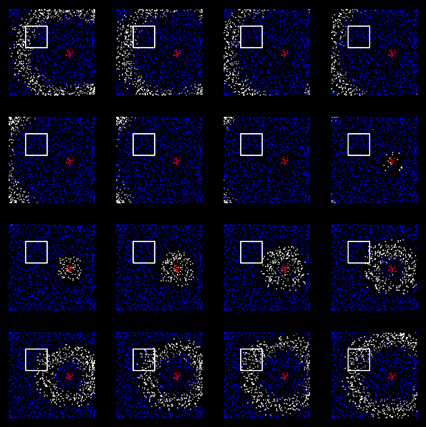
The activity of the cortex projecting i>

takes an active cortex. The images correspond to the same clocks projecting bark. I>
It is seen that when the wave passes through the area on the transmission tunnel area of the cortex, it triggers a wave at the receiving area (shown already trained zone). It is important that the resulting wave retains all the properties of the source identifier. For each phenomenon, as well as on the original crust on the bark of the recipient is called a characteristic only for this phenomenon propagation pattern.
Below, a video obtained by simulation. He has trained the left area and right area just started learning:

Counter projection i>
If the two zones of the cortex to connect the counter projections (picture above), you can get an interesting effect. The identifier of the first zone will move to the second area, spread over there and then come back and spread from the contact points of the wave tunnel. Thus, if the transfer occurs between the zones of myelinated fibers pulse propagation velocity which is about 100 m / s, while the signal path for the round trip zones spaced 10 inches apart, with close contact of the projection beam can be evaluated a few milliseconds. This means that, for a wave with a period of the order of identifiers 100 milliseconds signal return almost merges with the main wave. So, will be considered as part of an existing ID.
As a result, when the second cortex any way be reproduced identifier come before the first zone it by clicking on the tunnel wave back to the first zone, there is already known to cause this area identification wave. This mechanism allows not only to transmit information from one zone to another, but also to return it in the form that is understandable to both cortical areas.
If you compare the topography and wave projection, each good for its own purposes. Topographic projection is needed, where it is impossible to lose the information related to the mutual arrangement of the active elements. Wave projection is useful when possible to generate a description, built on a simple enumeration of concepts.
General information picture, which the brain uses - a set of descriptions. Each of the zones of the cortex generates a description in the factors peculiar to her. Thus except for a set of factors in different zones and the shape description. Topographic form retains the properties characteristic of the image, when the value has mutual spatial arrangement of the elements. The wave form of the description of these factors is equivalent to a disordered, show their activity.
In addition to solving the problem of the narrowness of the channel wave model allows to remove a substantial contradictions inherent in traditional models associated with local receptive fields of neurons in the upper levels. The essence of the conflict is that with each new level of neurons should allocate more generalized features and concepts, but for this they need a wider coverage of all the observed properties. Because the real neurons at all levels have limited receptive fields, the classical model is experiencing some difficulty in explaining this.
If you recall the neocognitron, all its complex neurons must be serviced by planes of simple cells. Simple cells belonging to a single plane, have the same weight and monitor simultaneously for all possible sites of the previous layer. Where we deliver to wave every place the necessary information, neocognitron in each position a set of simple neurons scans the entire surface of the presence of the desired pattern. This scan requires the tracking of totality, as offset by only one position completely changes the pattern. As a way to alleviate the problem, you can use the blur (picture below). With the erosion of the requirement for the totality of several weakened, since each simple neuron acquires the ability to react in a certain range of shear.

Improving recognition when erosion (Fukushima K., 2013) i>
But what can somehow be used for primary image processing is poorly applicable to more abstract areas of the cortex, where the patterns are caused by the activity of the "island" setting.
Using wave representation completely removes the problems of the local receptive fields. It turns out that the neuron does not have its synapses follow the entire crust. If the "Koran" not come to Mohammed, then Mohammed goes to the "crust". Waves identifiers themselves bring each neuron all the information necessary for the perception that it is enough just busy tracking their immediate environment, which fully shows his character passing waves.
Wave model stems from a few properties are in good agreement with the existing notions of the real projection system of the brain:
wave tunnels compact in the area of contact with the cortex, and hence several pads can exist without interfering with each other; tunnels are not critical to the place of removal to the place of information and call in the bark; tunnels do not require total removal of the activity of all the neurons of the contact area; Tunnel unprincipled preserve the ordering of the fibers, the fibers may be randomly intermixed within a single beam, which does not affect the result of the transfer. < /
The brain contains cortex which, learning, acquire their specialization. The essence of specialization - this is in terms of what area of the cortex will build its description. Description created any area of the cortex, via the projections becomes accessible to all those areas with which it has contact projection. Projection system evolutionarily acquired such a configuration that provides the most comprehensive display of what is happening.
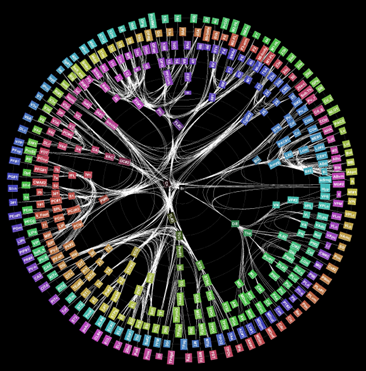
Visualization System projections monkey brain (IBM Research) i>
It should be noted that in addition to projections borne projection fibers, the information can be spread from one zone to another, just crossing the conventional boundary zones. Wave identifiers, reaching the edge of the area, could spread to the adjacent area. It will happen or not, can determine a match or mismatch between types of neurotransmitter receptors and extrasynaptic characteristic of neurons of these zones. If so, the existing schemes of projection bonds worth supplement such "neighborhood" projections.
Described projection ideology has amazing resiliency. Disconnecting any zone does not lead to failure of the whole structure, but only make poor system descriptions. Error on any zone is not of a fatal nature, as can be compensated for the work of the other zones.
Brain function can be compared with the system of news agencies, newspapers and websites. All they publish their description of what is happening. Many borrow information from each other. Information can be portrayed and interpreted by each of them individually. Some have their own specialization: someone has a bias on political news, someone on the news culture or art. Turning off one of the sources does not break the system, but only slightly impoverishes the information space. Each of the parties should not totally beyond all others, and has a well-established track list, which includes sources, it is the most interesting for him.
Here is another analogy. Imagine a system of institutions that work together on a global project. Work can be divided into parts and give the institutions narrow disjoint tasks. When each of them has done his job, will put all together and get the final draft. Another approach - in bulk all at once and duplicating each other, liaising, using other people's creations, create a few options and then choose the best of them. Obviously, the first option has many advantages, as a minimum, clarity and accountability of what is happening. In a second embodiment, the process is not obvious, but the result is not guaranteed. But it turns out that as learning and competitive experience, with proper incentive system, the second option may produce results far exceeding the first scheme.
In the next part I will try to describe how to practice, you can use the knowledge about the principles of projection information between areas of the cortex.
References
If somewhere too brief, unclear or unintelligible stated, please unsubscribe in the comments.
Previous parts:
Part 1. Neuron
Part 2. Factors
Part 3: Perceptron, convolutional network
Part 4. Background activity
Part 5. Brain Waves
Alexei Redozubov (2014)
Source: habrahabr.ru/post/214797/
